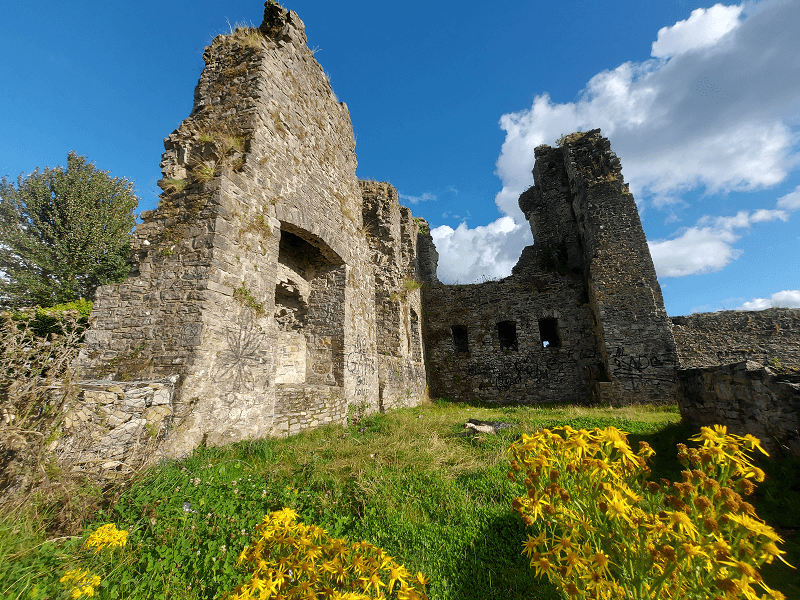History

Located on the top of a hill, this castle overlooks the town of Edenderry and holds a large view on the surrounding area.
Probably the first castle on the site was built in the 13th century by the De Bermingham’s, a Norman family who helped Richard de Clare, 2nd Earl of Pembroke (Strongbow), during the Norman Invasion of Ireland [1, 2]. The intention of the family was to strenghten the defences of the Bog of Allen area, by constructing more castles (other than Blundell, also those at Carbury and Carrick) [1]. The De Bermingham’s main residence was actually at the castle on Carbury Hill, from where their castles of Blundell and Carrick could be clearly seen [1]. As we will encounter them in the next paragraphs, it is worth to mention the control on these lands was threatened by the natives, in particular, by the O’ Connor clan, who ruled here at the time of the arrival of the Normans [1, 2].
However, the earliest records for the castle of Edenderry date back to the fifteenth century [1]. According to the Annals of Connacht, in 1416 “The castle of Edenderry was razed by [lord] Furnival [John Talbot, 2nd earl of Shrewsbury] at the beginning of winter” [3].
It is recorded in the Annals of Ulster that in 1427 “The castle of Edan-daire in Offaly was broken down by Foreigners [Gallaibh – Anglo-Irish] this year” [3]. In more detail, it was Sir John De Gray, Lord Lieutenant of Ireland in 1427-28, responsible for attacking the castle of Edenderry, probably because of an alliance between the De Bermingham’s and the O’Connor’s [1, 2]: the castle resulted being devastated and perhaps the tower house, whose ruins can be visited today, was added after these events [1].
During the fifteenth century and the beginning of the sixteenth century, thanks to alliances and inter marriages, the De Bermingham’s got prevailed by the local O’Connor Faly family, that consequently occupied Blundell castle during this period [1].
The O’Connor power came to the end due to internal feuding between clan members, who aimed at controlling Croghan Hill [1]. These events ultimately leaded to the control of the area by the English, and in particular the Colleys (or Cowleys) [1]. Documents of the time mention the castle and describe it as a tower house but it was then modified by Henry Colley in the 1560s, who had been granted the lands of Edenderry by Queen Elizabeth I in 1562, following the Plantation of King’s County (now Offaly) and Queen’s County (now Laois) [1, 3]. Although the Colleys power grew stronger in the following years, the castle endured several attacks from the native Irish [1]. In particular, in 1599, during the nine years’ war, Sir George Colley defended the castle from the attacks of the Gaelic forces of the Earl of Tyrone and, as a result, the castle suffered major damages in this occasion but was saved [1, 2].
 In the 1650s, the castle passed into the hands of George Blundell who had married Sarah Colley [1]. Although no record proves it, the castle might be involved also in the Irish Confederate Wars (1641 1653), as it happened to many other strongholds during that time [1].
In the 1650s, the castle passed into the hands of George Blundell who had married Sarah Colley [1]. Although no record proves it, the castle might be involved also in the Irish Confederate Wars (1641 1653), as it happened to many other strongholds during that time [1].
These were turbulent years for Ireland and also for the castle. During the "War of the two kings" (1689-1691), the Blundells, who had sided with the Williamite cause, destroyed the nearby Ballybrittan Castle, causing the Jacobite forces leaded by Lieutenant Colonel O’Connor to react, finally destroying Blundell castle and the town of Edenderry on 13 February 1691 [1, 2]. Today, only the East and South walls remain standing [2].
According to records, Lady Blundell, Sarah Colley, was buried in Edenderry in 1701 [1]. Since then, her ghost is haunting the castle [1, 2] (this was not in the records though).
Another legend is reported in [2, 5]: not far from the castle, there is the evidence of a tunnel, that might have been built by the De Berminghams, perhaps intending to safely connect Blundell castle to the Castle at Carbury, main residence of the family, during times of conflict with the local Gaelic clans. Anyway, the distance between the two castles is of about five miles (eight km) [2, 4, 5], probably unreasonably long for a tunnel but who knows… Maybe they really managed somehow to connect the castles. However, this is nogt not the most interesting part. It is said that, during the 19th century, when Edenderry was ruled by a Lord Downshire, his wife secretly used the tunnel to meet her lover at Carbury but, when the affair was discovered by Downshire, the woman was murdered [2, 5]. The reader who already visited other castles and came across other tales might be wondering if her soul is still crossing the conduit at night… Well, sorry to disappoint you, but to the best of our knowledge there is no legend confirming that.
References
- [1] edenderryhistory.blogspot.com, Blundell Castle, Edenderry
- [2] Ed Mooney Photography, Blundell Castle
- [3] THE IRISH ARCHAEOLOGY FIELD SCHOOL, Blundell Castle
- [4] Ireland in Ruins, Blundell Castle Co Offaly
- [5] Wikipedia, Bermingham Castles of Ireland








